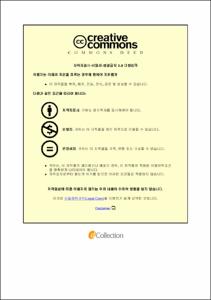정수처리시 소독부산물 저감을 위한 응집공정의 최적화
- Alternative Title
- Optimization of coagulation process for reduction of disinfection by-products in water treatment
- Abstract
- About 80% of korean water treatment plants are using river waters as a raw water. Therefore, water treatment plants are very sensitive to river pollution. Recently water pollution is increased eutrophication, industrializa-
tion, population growth, changes in lifestyle.
NOM (Natural oragnic matter) is a complex matrix of organic materials and a key component in aquatic environments. The presence of NOM is a matter of various problems in water treatment. First, it has a bad influence on the water quality such as taste, odor and color. Second, when trace amount of NOM is supplied from water treatment plants, the microorganisms can regrow in the water supply systems. Third, It increases coagulant dose and disinfectant dose during water treatment process.
NOM can react with chlorine and generates disinfection by-products such as THMs (Trihalomethanes), HAAs (Haloacetic acids) in water treatment process. The USEPA has established Rule for D/DBPs (Disinfectants and Disinfection by-products) in July 1994 and setting the MCL (Maximum contaminant level) of THMs to 80 μg/L and the MCL of HAAs to 60 μg/L. Currently in Korea, according to quality standard for drinking water in October 2016, THMs should not exceed 100 μg/L, and HAAs should not exceed 100 μg/L. In HAAs, DCAA (Dichloroacetic acid) and TCAA (Trichloroacetic aicd) are classified as a monitoring items, both of which are known te be carcinogenic to animals.
As the problems of NOM around the world become an issue, much attention has been focused on developing more reliable and efficient water treatment processing technologies. Removing the NOM imposes lots of advanced water treatment technologies such as ozonation, activate carbon adsorption and etc. Coagulation is more economical and easier to operate than the advanced water treatment process.
Therefore, this research finds optimum coagulant dose and pH condition to improve the NOM removal. This research has shown DOC removal, DBPs removal in optimun dose and pH condition. The experiments were conducted with ferric chloride and alum as a coagulant.
Two coagulants optimum dose is 0.15 mM and optimum pH is 5.5. Under optimum pH condition, ferric chloride improves about 20% better than DOC removal in optimum coagulant dose. In case of alum improves about 10% better than DOC removal in optimum coagulant dose.
In order to confirm the removal efficiency of THMs and HAAs, representative materials of DBPs, THMs and HAAs are measured after jar test to examine the removal efficiency. Ferric chloride is showed 81.2% removal DOC in optimum pH condition. In case of Alum, the removal rate of THMs is showed 69.9% THMs removal in optimum pH condition. The removal rate of HAAs is showed 89.4% at Ferric chloride in optimum pH condition. In case of Alum, the removal rate of HAAs is 74.7% in optimum pH condition.
In the NOM, the organics are classified according to the characteristics, and the DBPFP (Disinfection by-products formation potential) and the degree of elimination by the jar test are examined according to the characteristics. THMFP (Trihalomethane formation potential) is high in order of hydrophobic and hydrophilic, and THMs are produced in order of humic acid and fulvic acid in hydrophobic. HAAFP (Haloacetic aicd formation potential) shows the same tendency. The removal efficiency of THMs is improved 23% for fulvic acid, 10% for humic acid and hydrophilic as a result of optimum pH condition better than optimum coagulant dose. In case of HAAs, the removal rate is improved 4% for fulvic acid, 1% for humic acid, 10% for hydrophilic as a result of optimum pH condition better than optimum coagulant dose.
- Issued Date
- 2017
- Awarded Date
- 2017. 8
- Type
- Dissertation
- Publisher
- 부경대학교
- Alternative Author(s)
- Jeon youngwook
- Affiliation
- 부경대학교 대학원
- Department
- 대학원 지구환경시스템과학부지구환경과학전공
- Advisor
- 강임석
- Table Of Contents
- Ⅰ. 서론 1
Ⅱ. 문헌연구 4
2.1 Humic substance 발생 및 특성 4
2.1.1 Humic substance 발생 4
2.1.2 Humic substance의 특성 5
2.2 Coagulation mechanism 8
2.2.1 Double layer compression 9
2.2.2 Adsorption and Charge neutralization 9
2.2.3 Sweep floc mechanism 10
2.2.4 Interparticle bridging 11
2.2.5 Coagulation mechanism of NOM 13
2.3 Characteristic of metal salt coagulants 17
2.3.1 금속염의 가수분해 17
2.3.2 Al(Ⅲ)와 Fe(Ⅲ)의 용해성 20
2.4 Disinfection by products (DBPs) 25
2.4.1 소독부산물의 생성 25
2.4.2 소독부산물의 생성반응 29
Ⅲ. 재료 및 방법 31
3.1 실험재료 31
3.1.1 원수수질 31
3.1.2 응집제 선정 31
3.2 장치 및 분석방법 32
3.2.1 수질분석 32
3.2.2 Jar-Test 35
3.2.3 유기물 분류 37
Ⅳ. 결과 및 고찰 39
4.1 낙동강 원수의 계절별 특성 39
4.2 NOM 제거를 위한 최적 응집제 주입농도 선정 40
4.3 NOM 제거를 위한 최적 pH 선정 44
4.4 계절별 NOM 제거 특성 46
4.5 DBPs 제거특성 51
4.5.1 유기물 성상별 DBPs 생성능 비교 및 제거효율 51
4.5.2 응집에 의한 소독부산물 저감 특성 57
Ⅴ. 결론 63
Ⅵ. 참고문헌 65
- Degree
- Master
- Appears in Collections:
- 대학원 > 지구환경시스템과학부-지구환경과학전공
- Files in This Item:
-
-
Download
 정수처리시 소독부산물 저감을 위한 응집공정의 최적화.pdf
기타 데이터 / 1.98 MB / Adobe PDF
정수처리시 소독부산물 저감을 위한 응집공정의 최적화.pdf
기타 데이터 / 1.98 MB / Adobe PDF
-
Items in Repository are protected by copyright, with all rights reserved, unless otherwise indicated.